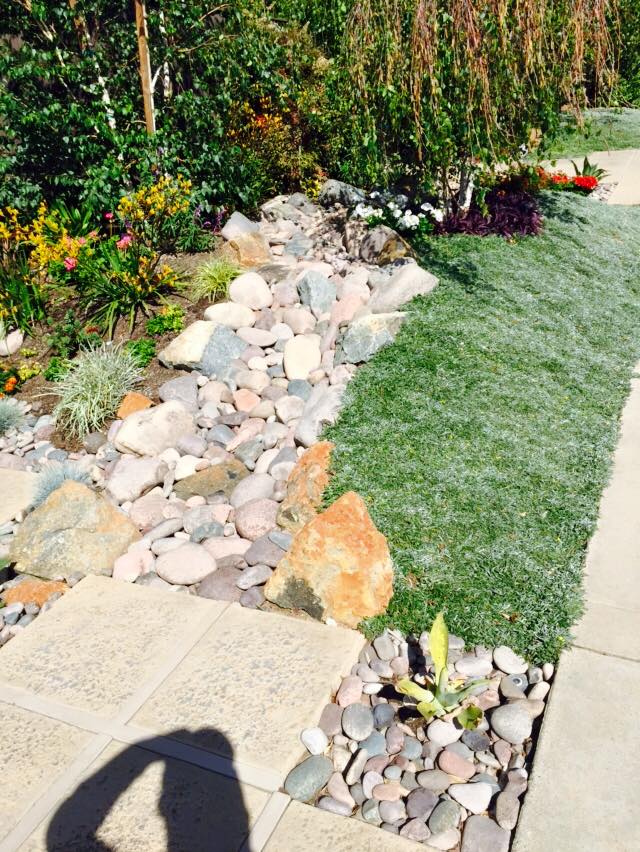Creating a lush, green lawn doesn’t have to come at the expense of the environment. Eco-friendly lawn installation options are becoming increasingly popular as homeowners seek sustainable ways to beautify their outdoor spaces. From selecting the right grass types to using organic fertilizers, there are numerous ways to make your lawn installation project environmentally friendly. Here’s how you can achieve a beautiful, eco-conscious lawn.
Choosing Sustainable Grass Varieties
Selecting the right type of grass is the first step in creating an eco-friendly lawn. Look for grass varieties that are well-suited to your local climate and soil conditions. Native grasses, which are adapted to the local environment, typically require less water, fertilizer, and maintenance. Some excellent options include:
- Buffalo Grass: Ideal for warmer climates, buffalo grass is drought-tolerant and requires minimal mowing.
- Fescue: This grass is perfect for cooler regions and can thrive in shady areas with low water needs.
- Zoysia Grass: Known for its durability, zoysia grass is drought-tolerant and grows well in various soil types.
Soil Preparation with Organic Amendments
Healthy soil is the foundation of a sustainable lawn. Before installing your new grass, prepare the soil by incorporating organic amendments. Compost, aged manure, and organic mulch can improve soil structure, enhance nutrient content, and promote healthy root growth. These natural amendments also reduce the need for chemical fertilizers, which can harm the environment.
Water-Efficient Irrigation Systems
Water conservation is a critical aspect of eco-friendly lawn care. Traditional sprinkler systems often wastewater, but modern irrigation technologies can significantly reduce water usage. Consider installing a drip irrigation system, which delivers water directly to the roots, minimizing evaporation and runoff. Additionally, smart irrigation controllers can adjust watering schedules based on weather conditions and soil moisture levels, ensuring your lawn receives the right amount of water without waste.
Organic and Natural Fertilizers
Instead of relying on synthetic fertilizers, opt for organic or natural alternatives to nourish your lawn. Organic fertilizers, such as compost tea, fish emulsion, and bone meal, release nutrients slowly, promoting steady growth and reducing the risk of nutrient runoff into waterways. Moreover, these fertilizers improve soil health by fostering beneficial microbial activity.
Mulching and Grasscycling
Mulching and grasscycling are effective practices for maintaining an eco-friendly lawn. Mulching involves spreading a layer of organic material, such as grass clippings or shredded leaves, over the soil surface. This practice helps retain moisture, suppress weeds, and gradually adds nutrients to the soil as the mulch decomposes. Grasscycling, or leaving grass clippings on the lawn after mowing, also returns valuable nutrients to the soil and reduces the need for additional fertilizers.
Using Native Plants and Ground Covers
Incorporating native plants and ground covers into your lawn can enhance biodiversity and reduce maintenance requirements. Native plants are adapted to local conditions and typically require less water, fertilizer, and pest control. Ground covers, such as clover or creeping thyme, can be used in areas where traditional grass may struggle to grow, providing an attractive and low-maintenance alternative.
Reducing Chemical Pesticides and Herbicides
Chemical pesticides and herbicides can have harmful effects on the environment, including contaminating water sources and harming beneficial insects. Opt for natural pest control methods, such as introducing beneficial insects like ladybugs and predatory nematodes, to keep pests in check. Hand-pulling weeds or using organic herbicides can also help maintain a healthy, eco-friendly lawn.
Creating a Biodiverse Lawn
A biodiverse lawn supports a variety of plant and animal species, contributing to a healthier ecosystem. Incorporate flowering plants, shrubs, and trees that attract pollinators and other beneficial wildlife. Planting diverse species not only enhances the aesthetic appeal of your lawn but also promotes ecological balance and resilience.
Eco-friendly lawn installation options offer a sustainable way to create a beautiful, green yard while minimizing environmental impact. By choosing the right grass varieties, preparing the soil with organic amendments, installing water-efficient irrigation systems, and using natural fertilizers and pest control methods, you can achieve a lush, healthy lawn that benefits both your home and the environment. Embracing these eco-conscious practices will help you create a sustainable outdoor space that you can enjoy for years to come.
Looking for a sod lawn installation service in your area? Find your local The Huizar’s Landscape experts, and take one step closer to an amazing yard! You can also give us a call at 619-212-5478 to discuss the lawn of your dreams and get a free estimate. Contact us.

